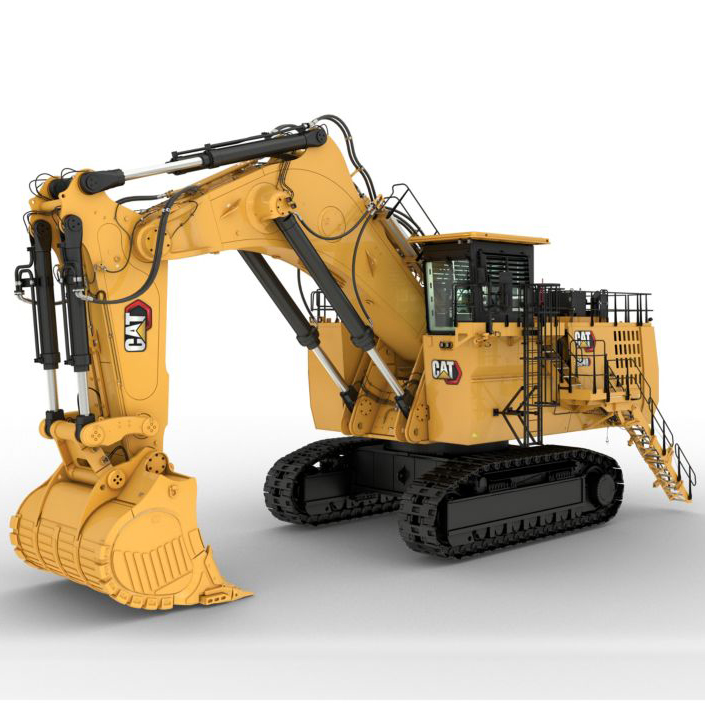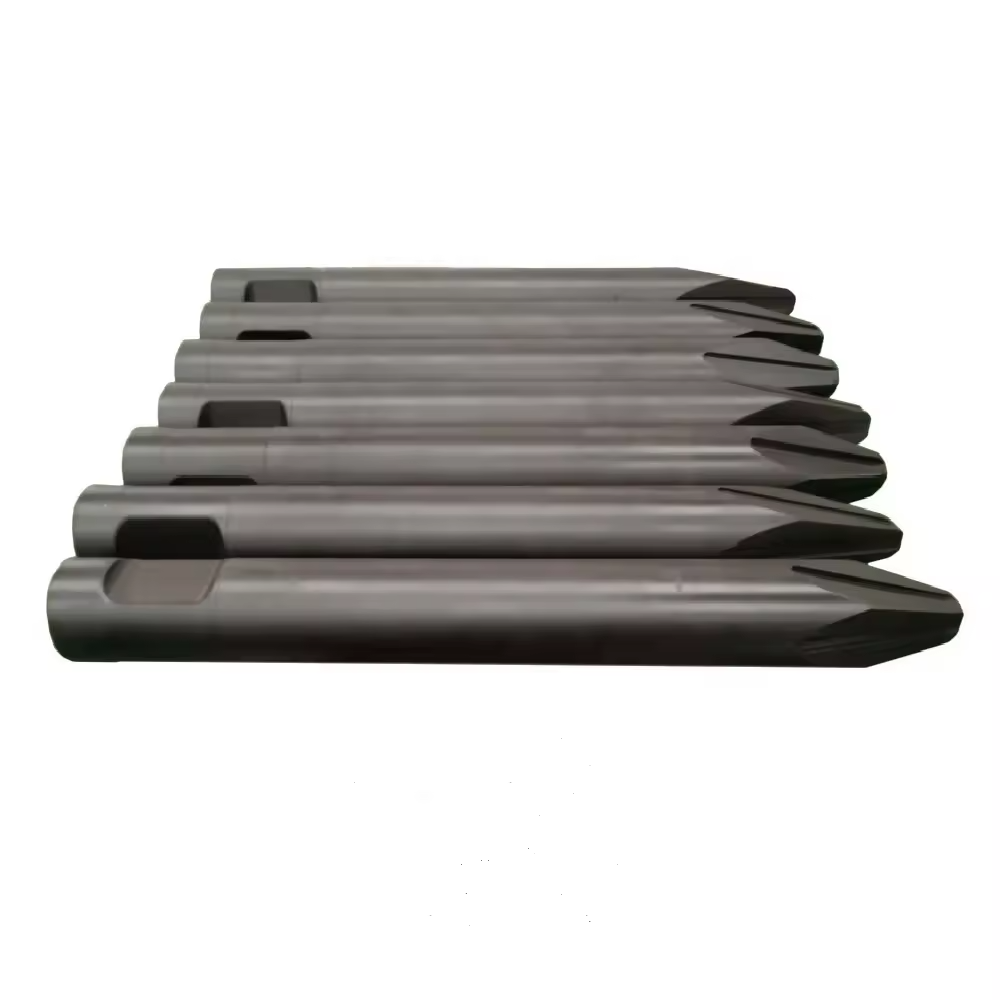
Choosing the right type and specification of breaker requires comprehensive consideration of five core dimensions: operating scenario, material properties, equipment matching, environmental restrictions, and cost-effectiveness.
1.Material strength and crushing target
Core parameters: material compressive strength (MPa), steel density, crushing depth
Selection logic:
Select a small breaker with a drill rod diameter of 40-68mm (such as straight type), an impact force of 1-5kN, suitable for thin layer breaking (depth <500mm).
A medium-sized breaker with a drill rod diameter of 70-100mm (such as triangular type) is required, with an impact force of 5-15kN, and an anti-stuck drill design to deal with steel bars.
A heavy-duty breaker with a drill rod diameter of more than 105mm, an impact force of >15kN, and a wear-resistant bushing and hydraulic accumulator must be used.

2.Working space and environmental restrictions
Preferably choose straight breakers (short length, no yaw), such as 40mm drill rod models (total length ≤1.2m), which can flexibly turn in spaces with a width of ≥2 meters.
Choose triangular breakers (strong stability and concentrated impact force), such as 100mm drill rod models, which are suitable for open-air crushing of pavement or large foundations.
Low-noise breakers (noise ≤85dB) are required, and models with soundproof covers or electric breakers (no diesel emissions) can be selected, while vibration acceleration <0.8g.
1.Tonnage and drill rod diameter comparison table
| Excavator tonnage (tons) | Recommended drill rod diameter (mm) | Typical operation scenarios |
| 1-3 | 30-45 | Indoor demolition, small trench crushing |
| 3-6 | 45-70 | Rural road demolition, concrete components |
| 6-15 | 70-100 | Municipal pavement, medium-sized rock crushing |
| 15+ | 105+ | Mining, large foundation demolition |
2.Key points for matching the hydraulic system
Flow rate (L/min): The model of the breaker needs to match the flow rate of the hydraulic pump of the excavator. For example, a breaker with a drill rod of 68mm usually requires a flow rate of 60-80L/min. Insufficient flow rate will lead to a decrease in the striking frequency (ideal frequency 600-900 times/minute).
Pressure (MPa): The working pressure of a small breaker is 16-20MPa, a medium breaker is 20-25MPa, and a heavy breaker is ≥25MPa. If the rated pressure of the excavator is insufficient, a supercharger needs to be installed.
Pipeline interface: Confirm the size of the pipeline interface of the excavator breaker (such as SAE 6000 psi interface) to avoid oil leakage or pressure loss due to interface mismatch.
1.Balance between initial investment and operating efficiency
It is more economical to rent a breaker with a drill rod of 40-68mm to avoid equipment idle costs.
When purchasing a medium-sized breaker with an annual operating volume of >2,000 cubic meters, the return on investment is about 1.5-2 years
2. Maintenance cost control
Drill rod: The life of a small breaker (40mm) is about 500-800 hours, and that of a medium breaker (100mm) is 1000-1500 hours. Regular inspection of wear is required (end diameter wear > 3mm needs to be replaced).
Bushing: Check the clearance every 200 hours (allowable ≤2mm). If the clearance exceeds the limit, the bushing and drill rod need to be replaced at the same time to avoid eccentric wear and hydraulic oil leakage.
1.Underwater operation
A waterproof breaker (sealing grade IP68) is required, and the surface of the drill rod is chrome-plated for corrosion protection. It is used with a water excavator. Typical scenario: underwater breaking of bridge pile foundations.
2.Rock excavation and mining
Choose a sharp-tooth drill rod (strong penetration) + hydraulic accumulator (reduce equipment impact), such as a 135mm drill rod model, which can increase efficiency by 30% with blasting pretreatment.
3.Crushing around pipelines
Use a flat-tooth drill rod (wide crushing surface and dispersed impact force), such as a 68mm drill rod model. When working at a distance of ≥500mm from the pipeline, the vibration impact radius can be controlled to <1.5 meters.
1.Avoid model mismatch: For example, if a 100mm breaker is forcibly installed on a 5-ton excavator, it will cause the hydraulic system to overload (oil temperature rises suddenly > 80°C) and even damage the pump valve.
2.Be wary of non-standard accessories: low-priced breakers may use inferior steel (carbon content of the drill rod < 0.5%), which is prone to breakage or rapid wear. It is recommended to ask the supplier to provide a material test report.
3.Trial verification: Before large-scale purchases, it is necessary to test the machine on site to test the crushing efficiency and equipment stability on the target material (continuous operation for 2 hours without abnormalities).
Contact With Us
If you have any questions please fell free to contact with us.